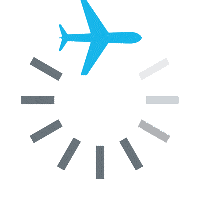In Part 1 of our Seaplane Rating and Float Rating series we discussed the basics of the seaplane rating and how to do basic operations in the aircraft before starting up and going. Part 2 looked at maneuvering the float plane on water and included the various ways to taxi.
Take–Off in a Float Plane
After the aircraft has been checked over and the passengers have been given a safety briefing, the pilot maneuvers the seaplane into the wind and retracts the water rudders to start the take-off. Open the throttle to take-off power and pull the stick all the way back.
As soon as the nose has come up as far as it will go, move the stick gently forward to a more or less neutral position. The aircraft will ‘climb-up’ onto the step as the centre of pressure (of the water) moves back along the floats.
The aircraft may have a tendency to veer to the left at the moment when going onto the step, (this is due to the P-Torque effect of the engine) a slight checking back on the control stick usually stops this motion. The step attitude should be maintained as steadily as possible until take-off speed is reached, at which time the aircraft will typically fly off the water.

An important technique to master is that of the most efficient planing angle of the floats. It is the angle at which the tails of the floats almost, but not quite, touch the water. Running the floats at a flatter angle tends to wet more of the forward bottom of the floats, thereby increasing resistance and slowing speed. It deserves careful attention during the early stages of float flying.
In practice, having the nose too high is one of the most common mistakes made by novice pilots. The best take-off planing angle is the angle which produces the least amount of resistance.
After the aircraft becomes airborne the nose should be lowered to accelerate in ground effect. This is to ensure a rapid transition through the slow flight range so a safe return to the water can be achieved in the event of an engine failure after take-off.
a. Glassy Water Take–Off
When the water becomes as smooth as a mirror, the same technique as described above apply with the added and very important need, to establish a ‘positive rate of climb’ to prevent the aircraft from flying back into the water surface.
A true glassy water take-off can be quite unnerving as the surface of the water is very hard to discern. A fixed reference point (like a rocky outcrop, point or dock) is very helpful in this situation.
b. Rough Water Take–Off
A rough water take-off is similar to a soft field take-off on land, the objective is to get out of the water as soon as possible at the lowest speed. Once the aircraft is on the step, a slightly nose up attitude should be maintained to ensure the floats take the impacts of the waves at the step compartment which is the strongest point of the floats.
It is very important to ensure the rear of the floats are not dragging in the water and preventing the aircraft from accelerating. The proper attitude is a very subtle nose up position.
A rough water take-off can turn into a series of bounces from wave to wave. They are typically not very pretty. Sometimes the aircraft can be tossed into the air at minimum flying speed. Applying an extra amount of flap at that precise moment will usually keep the aircraft from stalling back onto the next wave.
Again, the proper attitude is critical to avoid damaging the aircraft. Through experience a pilot will learn when it is too rough. When this happens, you may opt not to go or search for a more sheltered area to conduct the take-off.
c. Cross–Wind Take–Off
A cross-wind take-off involves similar techniques as the normal take-off with the exception that the ailerons are kept fully into the wind to keep the upwind side of the aircraft from being lifted out of the water before flying speed has been reached.
You will often see float pilots ‘roll’ one float out of the water in a cross wind or heavy take-off condition. The reason for this is two-fold;
1. It keeps the aircraft positively on the water until a safe flying speed is reached and;
2. It effectively halves the resistance the aircraft is experiencing and expedites attaining flying speed.
It is half of the most important skill you will learn in your training (the cross-wind landing is the other half)
Carefully balanced use of aileron and rudder are required to properly perform this maneuver. NEVER lift the upwind float during the take-off! This can easily cause the aircraft to skip sideways on the water and possibly ‘ground loop’.
You will meet some float pilots that consider this an effective way of getting off the water quicker. Quicker is not necessarily better, it is always prudent to avoid situations which make us vulnerable. Settling back on the water in a sideways drift can be very dangerous.
d. Down–Wind Take–Off
It is important to note that a downwind take-off can typically double the take-off run, except in very light wind conditions, so should be avoided unless necessary for other reasons. This is an important consideration when trying to determine available space and water conditions.
The difference in a downwind take-off compared to a normal take-off is that as soon as the water rudders are raised the aircraft will attempt to weather-cock into the wind. This can be overcome by coarse application of the air rudder. To make the air rudder more effective in the initial part of the take-off, the flaps can be kept up to prevent them from blanking the rudder.
After the aircraft has begun to gain forward momentum and the air rudder is effectively controlling the direction for the take-off, flaps can then be lowered to the required position. Water rudders should be in the “up” position.

Air Work
Steep turns should be done with a bank of about 45 degrees, within 100 feet of the starting altitude and ±10 mph airspeed. Remember to keep the ball in the middle at all times with the rudder. Increase power as required to maintain altitude. Steep turns are an excellent practice in coordinating all three flight controls and power application.
A steep turn is entered like any other turn, but as the angle of bank is increased beyond 30 degrees, you will need more power to maintain airspeed and altitude. A steep turn cannot be done by numbers only; it requires complete simultaneous coordination of all controls.
Slow flight is practiced to acquaint the pilot with the aircraft’s characteristics when flying close to minimum control speed. Flying in the slow flight mode, particularly at low altitude and strong gusty conditions, could put the pilot in a critical situation. Therefore, you must monitor your flight instruments very closely in order to achieve coordinated flight and a safe margin of airspeed. Slow flight does amplify any errors in basic flying technique and therefore precise control of the aircraft is essential.
Blogs
Discover more from Canadian Flight Trainers
Subscribe to get the latest posts sent to your email.





